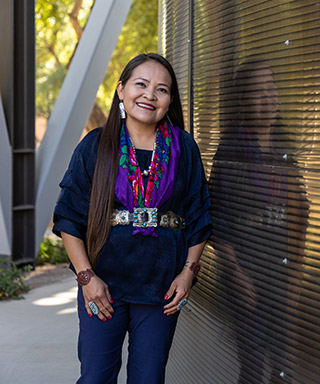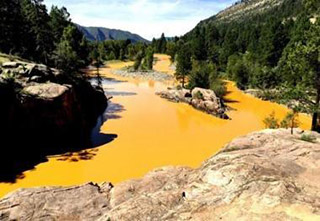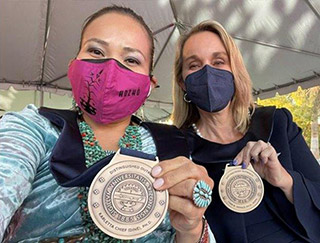
(Photo courtesy of Karletta Chief)
Karletta Chief, Ph.D., a hydrologist at the University of Arizona, facilitates collaborations between Indigenous communities and researchers to build resilience and improve environmental health.
Chief explained how her interest in water stemmed from growing up within Navajo nation.
“Water is a real part of my identity,” Chief explained in a Science Friday video series. “The Navajo people, or Diné people, have this deep connection to the environment.”
Despite the importance of the environment to their livelihood and culture, Chief’s community lives where their environment is threatened by mining operations.
“Coal mining pollution affected my family both environmentally and health wise, and that is what fueled my motivation to study water and help my community understand how to better protect themselves.”
After receiving her Ph.D. in Hydrology and Water Resources from the University of Arizona, Chief completed her postdoctoral research at the Desert Research Institute, where she began to explore how extreme weather can further affect tribal communities’ water.
Today, as the Community Engagement Core (CEC) lead for the NIEHS-funded Superfund Research Program Center and the Director of the Indigenous Resilience Center, Chief is working to understand and address impacts on tribal water sources from both environmental contamination and Weather-Related Hazards.
Addressing Community Needs

In response to the Gold King Mine Spill in a local water supply, Chief led a team that conducted a rapid response assessment to the disaster based on community questions and concerns.
The research team identified exposure pathways unique to tribal communities living near the river. In addition to recreational and agricultural uses – often considered in traditional research studies – they documented the community’s spiritual, cultural, and artistic connections to the river.
“We gathered data on over 40 different activities where Native Americans engaged with the river that traditionally had not been considered in research projects, she said. “This data showed that we have to understand the community and look beyond what is conventional to truly characterize environmental health.”
An important part of their work included reporting research findings back to the community. Chief, who typically makes presentations to residents in the Navajo language, and her team translate the scientific findings into information relevant to the farmers, ranchers, and families who are affected.
“Addressing tribal challenges has to include the communities’ perspectives, knowledge, and aspirations in order to truly have the greatest impact,” said Chief. “We are visitors to these communities, but they will have these challenges for the long term.”
Building on this project, Chief and team continue to better understand health inequities in Native American communities. She partners with multiple tribal nations to build their capacity to mitigate environmental health risk within a holistic Indigenous framework that includes language, culture, education, health, and the environment.
Focus on Resilience
Chief explained how the Indigenous Resilience Center grew out of the work and collaborations surrounding the Gold King Mine project.
The center, which focuses on agriculture, solar energy, off-grid water resources, food resources, and Native plant adaptation, among others, is striving to curate a hub of individuals doing similar work supporting resilience of Indigenous communities.
“It is critical that Native nations drive the research questions based on their priorities and long-standing local knowledge, and that the approaches involve decolonized and Indigenized approaches with Indigenous scientists leading these efforts,” she said. “Building this team will allow us to branch out to make an impact with more communities and build resilience in a way that is respectful of traditional knowledge, acknowledges tribal sovereignty, and aims to be transparent,” she said.
Celebrating Contributions

Recently, Chief received the University of Arizona Distinguished Outreach Faculty Award for 2021. Chief will be honored with a bench featuring quotes chosen by her to be placed within the new Women's Plaza of Honor. The plaza is to recognize the role of women in academia and the university.
“I was really touched by this honor because I come from a community where women are the leaders and givers of our identity, culture, and language, but that is not common in academic spaces,” she explained. “The bench in the plaza will bring my two worlds together.”
Chief explained that she is proud to stand on the shoulders of the many women who laid the foundation and sacrificed for women’s rights. She looks forward to her bench becoming a building block of inspiration for others to go on and do positive things in the world.
Karletta Chief

